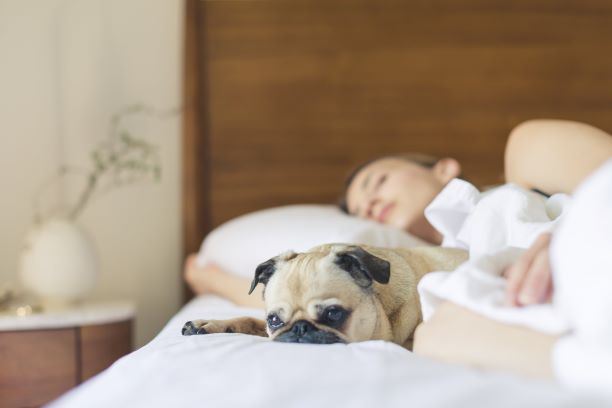Dog Separation Anxiety: How to ease stress among dogs
Whining, barking, pacing — these are fairly common actions our dogs exhibit to indicate that they either want something or they’re trying to alert you about something or someone. But when these actions are accompanied by visible signs of fear and stress especially when you’re about to go out of the house, this could be an indication of separation anxiety.
There are many potential reasons for why separation anxiety occurs among dogs. However, it has, thus far, been heavily linked to changes in their amount of exposure to people (especially their owner), change in ownership, and sudden change in their routine.
So, how can you help your fur baby cope with the separation?
Believe it or not, the simplest solution lies heavily in you being as calm and consistent in your routine. Remember that you’re the pack leader. Your dog’s behaviour relies heavily on your ability to balance the amount of discipline and affection that you provide.
Here are some of the best ways to help ease the symptoms of separation anxiety among dogs:
Change your routine
Changing your dog’s habits rely heavily on how you manage these habits. One great way to ease anxiety among dogs is to make sure to have them exercise BEFORE you leave. This consumes their energy enough to leave them too tired to be anxious when you leave.
Another great way to ease the stress if to give them treats or leave the TV or classical music on before you leave. Treats keep them in a busy and happy state which allows you to go out of the house without a fuss. Classical music has also been proven to help dogs calm down in stressful situations.
Slowly train your dog to be alone
One of the best ways to ease separation anxiety is to let your dogs know that it’s okay to be alone. You can slowly introduce this concept to them by not making a fuss when you leave the house.
Dogs are smart enough to associate activities such as picking up your keys and putting on your shoes as a precursor to your departure. This is why it’s always smart to make these activities as less stress-inducing as possible for them.
Make these activities part of a normal routine. Pick up your keys or put on your shoes and do not leave the house so they stop associating it with you leaving. You can also do short activities where you go to another room and ask them to “stay” for a couple of seconds. Repeat this multiple times a day every day, prolonging the momentary separation over time until they get used to you not being around.
Monitor your dog’s behaviour
Before you take your dog to the vets, it’s probably best to check their behaviour and progress by setting up a camera at home. This way, you can check exactly how they’re doing when you’re out of the house.
If you’ve begun your separation training with them, having a camera set up will also allow you to watch them improve over time. There are also dog monitors that allow you to give your dog treats even when you’re not at home, allowing them to feel more secure even when you’re not physically present.
Know when to ignore and know when to give them a treat
You probably know the rule. Ignore your dog when he exhibits bad behaviour, give him a treat when he exhibits a good one. This rule can come in handy especially during crate training or separation training.
It lets them know when they’re doing a good job at something. You can do it personally at home, or through a dog monitor. But make sure to do this consistently and with clear association to a specific action. You can choose from our wide selection of dog treats here https://www.vetforpet.co.nz/shop/Dogs/Dog+Food++Treats/x_cat/00483.html
When dealing with dog separation anxiety, you’ll need consistency and a great deal of patience. Some dog breeds are quicker to learn than others, but over time, virtually all dogs are able to learn how to relax even when separated from their owners.
If your dog is exhibiting more concerning symptoms like diarrhea, panic, destruction to your property, or self-harming, consider taking them to the vets immediately. Doctors may be able to advise activities or prescribe medications to help them cope.
Separation anxiety causes unnecessary stress for both dogs and dog owners. But it doesn’t have to be something you need to suffer for long. With proper training, paired with guidance from your vet, you can help make your comings and going easier for you and your dog.




Comments